
Russian For Dummies
.pdf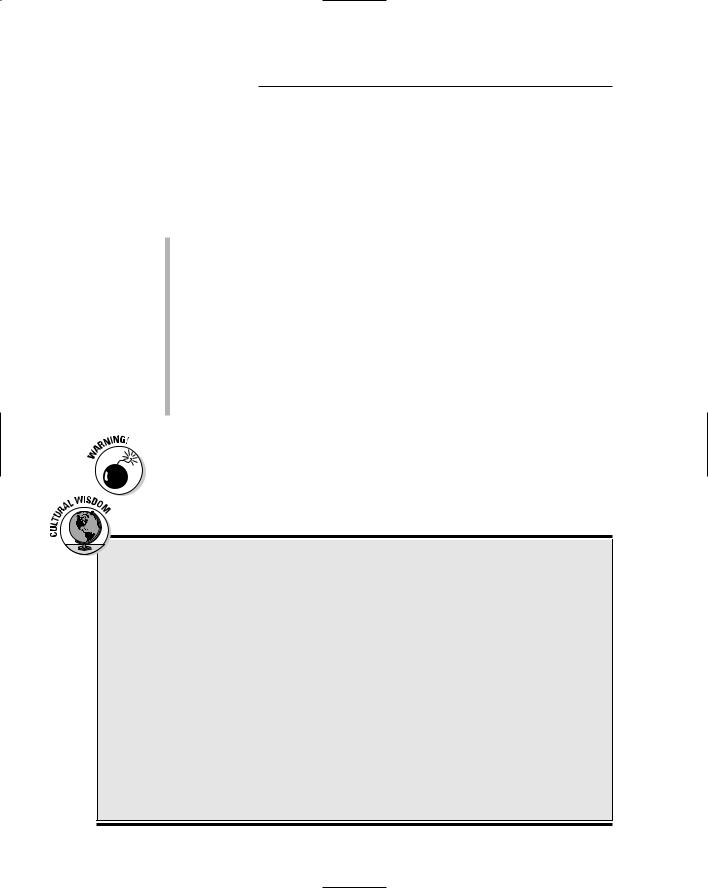
124 Part II: Russian in Action
question, starting off with the polite phrase, Skazhitye, pozhalujsta . . .
(skuh-zhih-tee pah-zhahl-stuh; Would you tell me please . . .) If you’re still looking for souvenirs, you can politely say Skazhitye, pozhalujsta, gdye suvyeniry? (skuh-zhih-tee pah-zhahl-stuh gdye soo-vee-nee-rih; Could you please tell me where souvenirs are?)
Some other additional shopping-related phrases include the following:
U vas prodayotsya/prodayutsya . . . ? (oo vahs pruh-duh-yot-sye/pruh- duh-yut-sye; Do you sell . . . ?) plus the name of the merchandise you’re looking for in the nominative case.
U vas yest’ . . . ? (oo vahs yest’; Do you have . . . ?)
Gdye mozhno kupit’ . . . ? (gdye mohzh-nuh koo-peet’; Where can I buy . . . ?) plus the thing(s) you want to buy in the accusative case.
Pokazhitye, pozhalujsta etot/eto/etu/eti . . . (puh-kuh-zhih-tee pah- zhahl-stuh eh-tuht/eh-tuh/eh-too/eh-tee; Please show me this/that . . .) plus the item(s) you want to see in the accusative case. (For more on using the demonstrative pronoun etot, see “Using demonstrative pronouns” later in this chapter.)
In making your requests or asking questions, try to avoid phrases such as “I am looking for . . .” or “I would like to see . . .” When translated into Russian, these phrases include the first-person pronoun ya (I). Using them isn’t culturally appropriate, because Russian tends to avoid this word in requests and in most cases requires that you make your requests impersonal.
You won’t hear “May I help you?”
You seldom hear the salespeople in a Russian store say Ya mogu vam pomoch’? (yah mah-goo vahm pah-mohch’; May I help you?) For more than 70 years during the Soviet regime, the salesperson rather than the customer was the boss in the stores. As a matter of fact, one of the authors of this book who grew up in Russia heard the question Ya mogu vam pomoch’? only once in her lifetime, namely during a recent visit to a major Moscow department store in postSoviet Russia. She attributes this occurrence to the fact that after years of living in the U.S., she looked more American than Russian, and that made the store assistant approach her with the typical American question “May I help you?”,
translated of course into Russian. In most cases you don’t have to bother about how you should respond to this question, but just in case you’re asked, you can say Spasibo, ya prosto smotryu.
(spuh-see-buh ya prohs-tuh smaht-ryu; Thanks, I’m just looking.) The good news is that nobody will ever mind your browsing if you don’t even plan on buying anything. However, you should know that you’ll probably be closely watched either by a prodavyets (pruh-duh-vyets; salesman), a prodavsh’itsa (pruh-duhv-sh’ee-tsuh; saleswoman), or an okhrannik (ah-khrah-neek; security guard), which almost every Russian store has today. But their main concern is not the quality of service but theft prevention!

Chapter 6: Shopping Made Easy 125
Talkin’ the Talk
Boris needs to buy new gloves and goes to a big department store. He has a short conversation with the rabotnik univyermaga (ruh- boht-neek oo-nee-veer mah-guh; the employee at the information desk).
Boris: |
Skazhitye, pozhalujsta, gdye mozhno |
|
kupit’ pyerchatki’? |
|
skuh-zhih-tee, pah-zhahl-stuh, gdye |
|
mohzh-nuh koo-peet’ peer-chaht-kee? |
|
Tell me, please, where can I buy gloves? |
Rabotnik univermaga: V galantyerejnom otdyelye. |
|
|
v guh-luhn-tee-reyy-nuhm aht-dye-lee. |
|
In the haberdashery department. |
Boris: |
A gdye galantyerejnyj otdyel? Na kakom |
|
etazhye? |
|
uh gdye guh-luhn-tee-ryey-nihy aht-dyel? |
|
nuh kuh-kohm eh-tuh-zheh? |
|
And where is the haberdashery depart- |
|
ment? On what floor? |
Rabotnik univermaga: Galantyereya na vtorom etazhe. |
|
|
guh-luhn-tee-rye-ye nuh ftah-rohm eh- |
|
tuh-zheh. |
|
The haberdashery is on the second floor. |
Boris: |
Ponyatno. Spasibo. A gdye lyestnitsa ili |
|
lift? |
pah-nyat-nuh. spuh-see-buh. uh gdye lyes- nee-tsuh ee-lee leeft?
I see. Thank you. And where are stairs or elevator?
Rabotnik univermaga: Lyestnitsa napravo, a lift nalyevo. lyes-nee-tsuh nuh-prah-vuh, uh leeft nuh- lye-vuh.
The stairs are to the right and the elevator is to the left.
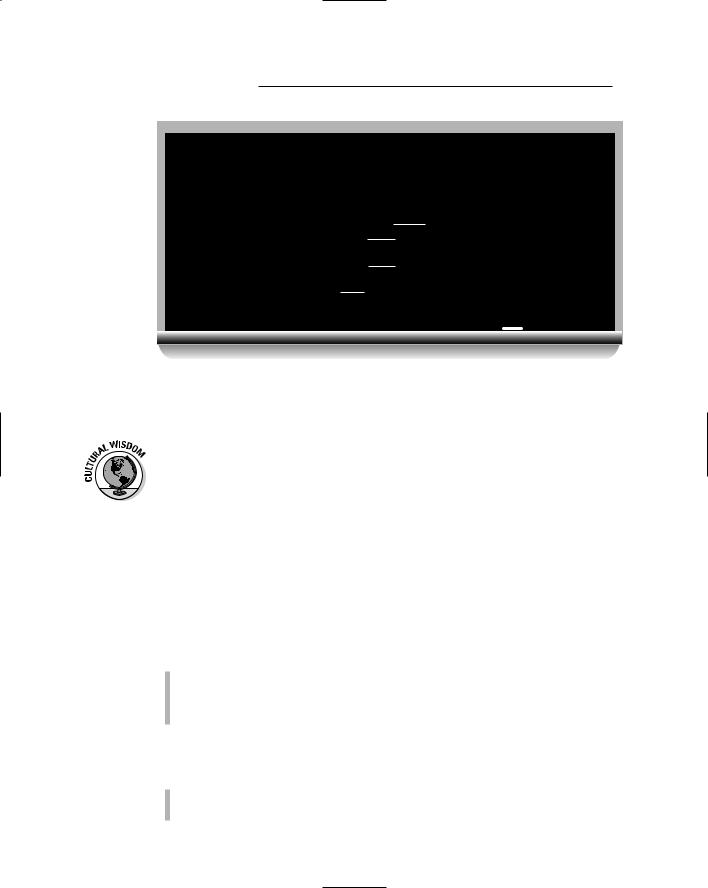
126 Part II: Russian in Action
Words to Know
A gdye? |
uh gdye |
And where is . . . ? |
Na kakom |
nuh kuh-kohm eh- |
On what floor? |
etahzhye? |
tuh-zheh |
|
Ponyatno |
pah-nyat-nuh |
I see |
lestnitsa |
lyes-nee-tsuh |
stairs |
lift |
leeft |
elevator |
You Wear It Well: Shopping for Clothes
Russian folk wisdom has it that people’s first impression of you is based on the way you’re dressed. That’s why you’re likely to see Russians well-dressed in public, even in informal situations. Clothes-shopping is a big deal to Russians and is often a full-day’s affair. In the following sections, we tell you how to get the most out of your clothes-shopping by describing what you’re looking for, and getting and trying on the right size.
Seeking specific items of clothing
If you’re looking for outerwear (which happens to tourists who forget to plan for the weather in a foreign place!), you want to go to the store or department called Vyerkhnyaya odyezhda (vyerkh-nee-ye ah-dyezh-duh; outerwear).
There you’ll find things like a
kurtka (koort-kuh; short coat or a warmer jacket)
pal’to (puhl’-toh; coat)
plash’ (plahsh’; raincoat or trench coat)
If you need a new pair of shoes, drop in to the store or department called
Obuv’ (oh-boof’; footwear) and choose among
bosonozhki (buh-sah-nohsh-kee; women’s sandals)
botinki (bah-teen-kee; laced shoes)

Chapter 6: Shopping Made Easy 127
krossovki (krah-sohf-kee; sneakers)
sandalii (suhn-dah-lee-ee; sandals)
sapogi (suh-pah-gee; boots)
tufli (toof-lee; lighter shoes for men and most shoes for women)
In the Galantyeryeya (guh-luhn-tee-rye-ye; haberdashery) you can buy all kinds of little things, both for her and for him, such as
chulki (chool-kee; stockings)
chyemodan (chee-mah-dahn; suitcase)
galstuk (gahl-stook; necktie)
khalat (khuh-laht; robe)
kolgotki (kahl-goht-kee; pantyhose)
kupal’nik (koo-pahl’-neek; bathing suit)
noski (nahs-kee; socks)
nosovoj platok (nuh-sah-vohy pluh-tohk; handkerchief)
ochki (ahch-kee; eyeglasses)
pizhama (pee-zhah-muh; pajamas)
pyerchatki (peer-chaht-kee; gloves)
raschyoska (ruh-sh’yos-kuh; hair brush/comb)
ryemyen’ (ree-myen’; belt)
sumka (soom-kuh; purse or bag)
varyezhki (vah-reesh-kee; mittens)
zontik (zohn-teek; umbrella)
In the store called Muzhkaya odyezhda (moosh-skah-ye ah-dyezh-duh; men’s apparel), you can find the following:
bryuki (bryu-kee; pants)
dzhinsy (dzhihn-sih; jeans)
futbolka (foot-bohl-kuh; football jersey/sports shirt)
kostyum (kahs-tyum; suit)
maika (mahy-kuh; T-shirt)
pidzhak (peed-zhahk; suit jacket)
plavki (plahf-kee; swimming trunks)
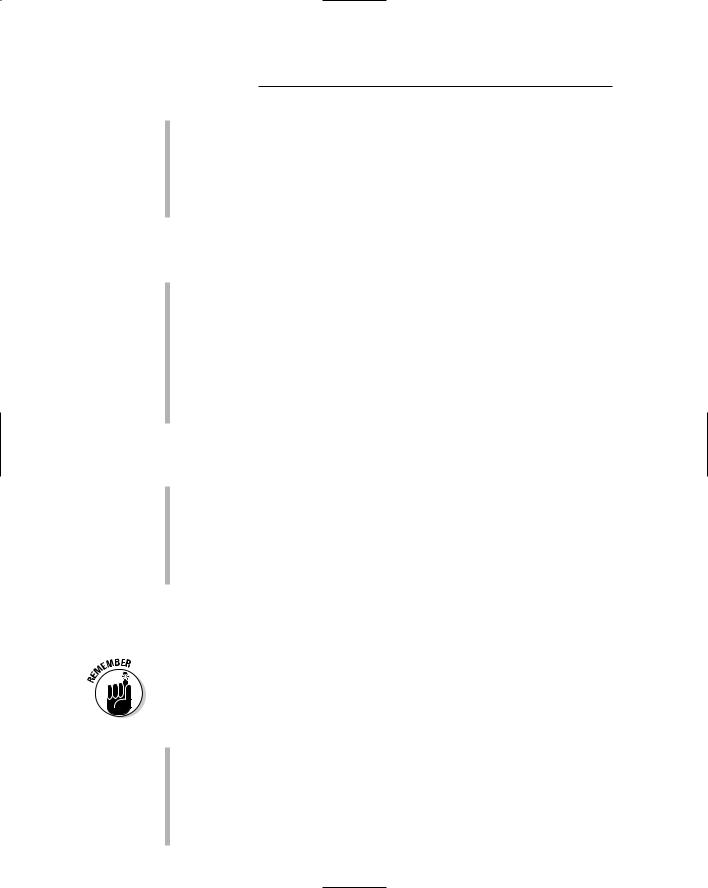
128 Part II: Russian in Action
rubashka (roo-bahsh-kuh; shirt)
shorty (shohr-tih; shorts)
svityer (svee-tehr; sweater)
trusy (troo-sih; men’s underwear)
zhilyet (zhih-lyet; vest)
In the store Zhyensaya odyezhda (zhehn-skuh-ye ah-dyezh-duh; women’s apparel), you can find a
bluzka (bloos-kuh; blouse)
kofta (kohf-tuh; cardigan)
lifchik (leef-cheek; bra)
plat’ye (plaht’-ee; dress)
sarafan (suh-ruh-fahn; sleeveless dress)
yubka (yup-kuh; skirt)
zhenskoye byel’yo (zhehn-skuh-ee beel’-yo; women’s underwear)
And if you need a hat, drop by the store or department called Golovnyye ubory (guh-lahv-nih-ye oo-boh-rih; hats) and buy a
kyepka (kyep-kuh; cap)
platok (pluh-tohk; head scarf)
shapka (shahp-kuh; warm winter hat)
sharf (shahrf; scarf)
shlyapa (shlya-puh; hat)
Describing items in color
What’s your favorite color? When picking out clothes, you may want to tell the salesperson Ya lyublyu krasnyj tsvyet (ya lyub-lyu krahs-nihy tsvyet; I like red, Literally: I like the color red) or Ya lyublyu zyelyonyj tsvyet (ya lyub- lyu zee-lyo-nihy tsvyet; I like green, Literally: I like the color green). Some common colors are
byelyj (bye-lihy; white)
chyornyj (chyor-nihy; black)
goluboj (guh-loo-bohy; light blue)
korichnyevyj (kah-reech-nee-vihy; brown)
krasnyj (krahs-nihy; red)
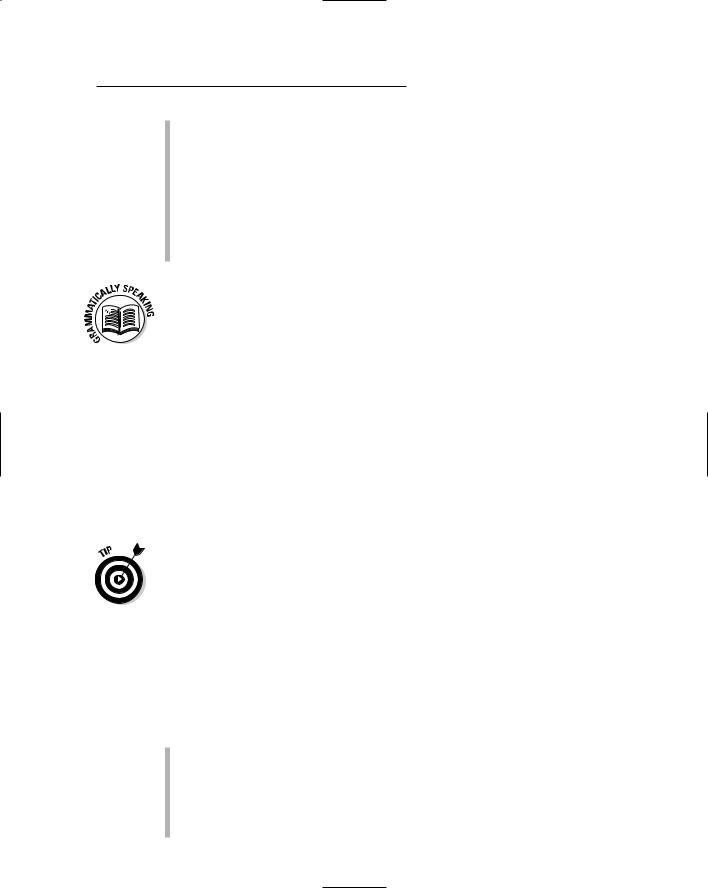
Chapter 6: Shopping Made Easy 129
oranzhyevyj (ah-rahn-zhih-vihy; orange)
purpurnyj (poor-poor-nihy; purple)
rozovyj (roh-zuh-vihy; pink)
siniy (see-neey; blue)
syeryj (sye-rihy; gray)
zhyoltyj (zhohl-tihy; yellow)
zyelyonyj (zee-lyo-nihy; green)
The names for colors in Russian are considered adjectives. So when you’re describing the color of an item you want, make sure the color agrees in case, number, and gender with the noun it modifies. (For more on adjective-noun agreement, see Chapter 2.) For example, a black hat in the nominative case is chyornaya shlyapa (chohr-nuh-ye shlya-puh), a black dress is chyornoye plat’ye (chohr-nuh-ee plaht’-ee), and black shoes are chyornyye botinki (chohr-nih-ee bah-teen-kee).
If you want to ask for a different shade of a color, use the phrase A potyemnyeye/posvyetlyye yest’? (uh puh-teem-nye-ee/puhs-veet-lye-ee yest’? Do you have it in a darker/lighter shade?) Other words that may come in handy are odnotsvyetnyj (uhd-nah-tsvyet-nihy; solid), and raznotsvyetnyj (ruhz-nah- tsvyet-nihy; patterned).
Finding the right size
Shoe and clothing sizes differ from country to country, but you don’t have to memorize them all when you’re traveling. You can usually find conversion charts in any travel book or even in your own pocket calendar. And a great resource for shoe sizes is www.i18nguy.com/l10n/shoes.html#adult.
Sizes from different systems are often displayed on the items themselves. If you ever need to convert from inches into centimeters for any clothing item (Russian sizes are given in centimeters), multiply the size in inches by 2.53 and you get the equivalent size in centimeters. But the best way to be certain something fits is just to try the item on!
Following are some of the words and phrases you may hear or say while searching for your right size:
Razmyer (ruhz-myer; size)
Ya noshu razmyer . . . (ya nah-shoo ruhz-myer; I wear size . . .)
Eto moj razmyer. (eh-tuh mohy ruhz-myer; This is my size.)
Kakoj vash/u vas razmyer? (kuh-kohy vahsh/oo vahs ruhz-myer; What’s your size?)
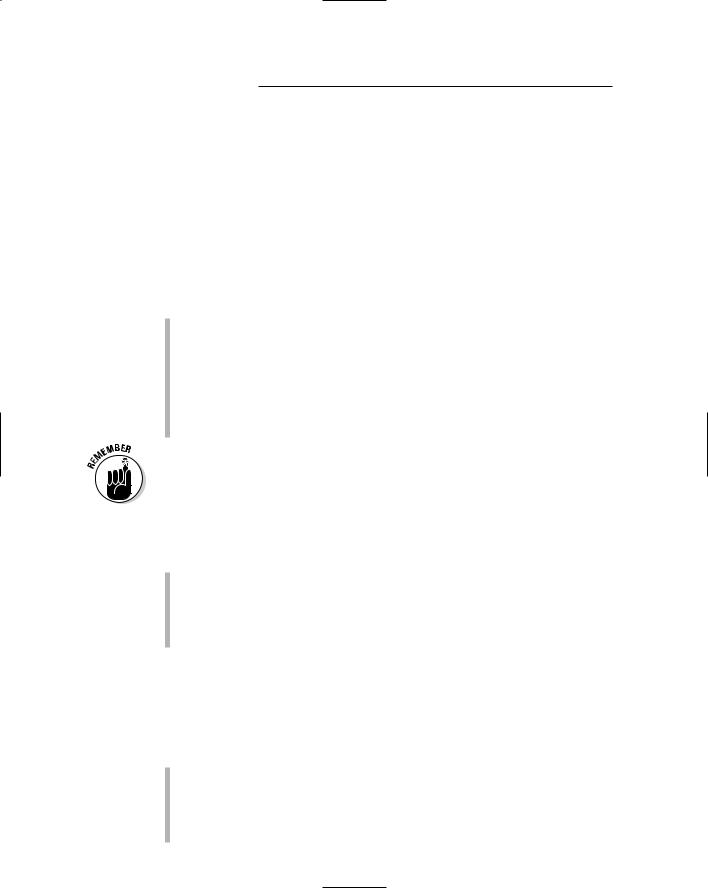
130 Part II: Russian in Action
Trying on clothing
Before you decide you want to nosit’ (nah-seet; to wear) something, you probably want to try it on first. To ask to try something on, you say Mozhno pomyerit’? (mohzh-nuh pah-mye-reet’; May I try this on?) You most likely hear Da, pozhalujsta. (dah, pah-zhahl-stuh; Yes, please.) Or if the salesperson isn’t around, just head to the fitting room yourself, which is acceptable in Russia.
When you try something on, and it fits you well, you say Eto khorosho sidit. (eh-tuh khuh-rah-shoh see-deet; It fits.) If it doesn’t fit, you say Eto plohkho sidit (eh-tuh ploh-khuh see-deet; It doesn’t fit). Here are some other adjectives you may use to describe the clothes you’re considering buying:
khoroshyj (khah-roh-shihy; good)
plokhoj (plah-khohy; bad)
bol’shoj (bahl’-shohy; big)
malyenkij (mah-leen’-keey; small)
dlinnyj (dlee-nihy; long)
korotkij (kah-roht-keey; short)
Don’t forget when using these adjectives to add the correct ending, which depends on the case, number, and gender of the noun the adjective refers to. (For more on adjective-noun agreement, see Chapter 2.)
The item you’ve just tried on may turn out to be too big or too small. To say something is too big, use this construction: The name of the item + mnye (mnye; to me) followed by
vyelik (vee-leek; too big) for masculine nouns
vyelika (vee-lee-kah; too big) for feminine nouns
vyeliko (vee-lee-koh; too big) for neuter nouns
vyeliki (vee-lee-kee; too big) for plural nouns
If the raincoat you just tried on is too big, for example, you say Etot plash’ mnye vyelik. (eh-tuht plahsh’ mnye vee-leek; This raincoat is too big for me.) See Chapter 2 for more info on how to determine the gender of a noun.
If, on the other hand, something is too small, you say the name of the item + mnye + one of the following:
mal (mahl; too small) for masculine nouns
mala (muh-lah; too small) for feminine nouns
malo (muh-loh; too small) for neuter nouns
maly (muh-lih; too small) for plural nouns

Chapter 6: Shopping Made Easy 131
This or That? Deciding What You Want
One of the most exciting things about shopping for clothes (or anything, for that matter) is talking about the advantages and disadvantages of your potential purchase. In this section we give you all the words, phrases, and grammatical constructions you need to do just that. We tell you how to express likes and dislikes, how to compare items, and how to specify which item you like best of all.
Using demonstrative pronouns
When deciding which dress you want to buy, you may want to make a statement like Eto plat’ye luchshye chyem to. (eh-tuh plaht’-ee looch-sheh chehm toh; This dress is better than that one.) The words eto (eh-tuh; this) and to (toh; that one) are called demonstrative pronouns. In Russian, demonstrative pronouns function like adjectives and change their endings depending on the case, number, and gender of the nouns they modify. (See Chapter 2 for more on adjective-noun agreement.) When comparing items, you’re almost always using demonstrative pronouns only in the nominative case, so here are all the forms you need to know:
etot (eh-tuht; this or this one) for masculine nouns
eta (eh-tuh; this or this one) for feminine nouns
eto (eh-tuh; this or this one) for neuter nouns
eti (eh-tee; these or these ones) for plural nouns
tot (toht; that or that one) for masculine nouns
ta (tah; that or that one) for feminine nouns
to (toh; that or that one) for neuter nouns
tye (tye; those or those ones) for plural nouns
Expressing likes and dislikes
When people go shopping, they often base their final decisions on one simple thing: You either like something or you don’t! To express that you like something in Russian, you say Mnye (mnye; Literally: to me) + a form of the verb nravitsya (nrah-veet-sye; to like) + the thing(s) you like. The verb must agree in number (and gender, for past tense) with the thing(s) you like. It’s a peculiar construction: What you’re saying literally is “To me, something is liked.” If you like a particular coat, for example, you say Mnye nravitsya eta kurtka. (mnye nrah-veet-sye eh-tuh koort-kuh; I like this coat.)
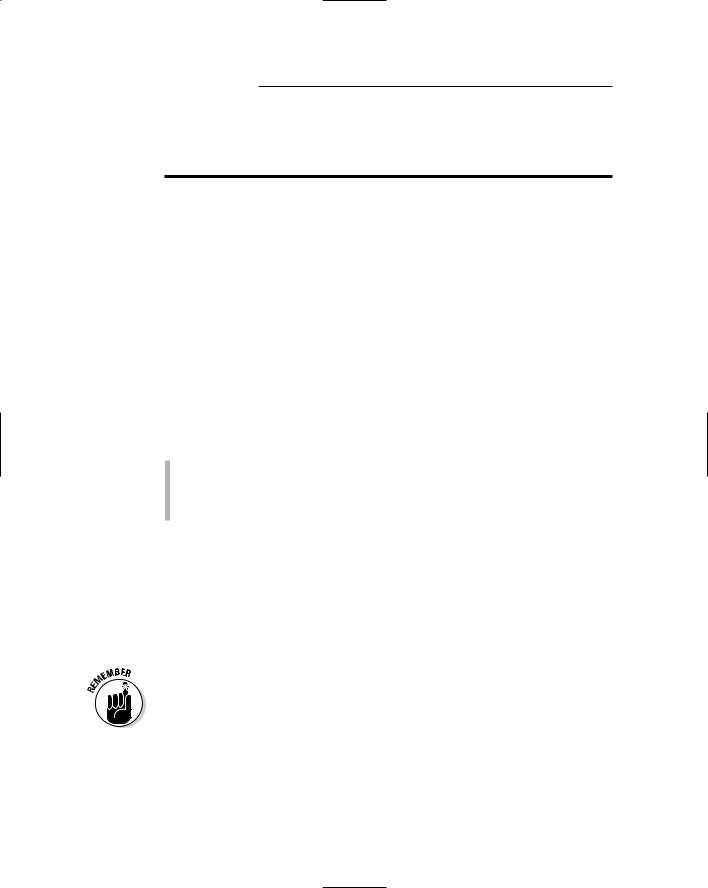
132 Part II: Russian in Action
Table 6-1 has some other forms of the verb nravitsya you may need to use, depending on the thing(s) you’re talking about and the tense you’re using.
Table 6-1 |
Tenses of Nravit’sya |
Present Tense |
nravit’sya (singular), nravyatsya (plural) |
|
|
Past Tense |
nravilsya (masculine), narvilas’ (feminine), nravilos’ |
|
(neuter) naravilis’ (plural) |
|
|
Future Tense |
budyet nravit’sya (singular) and budut nravit’sya (plural) |
|
|
If you want to express that you don’t like something, you simply add nye
(nee; not) before nravitsya, as in Mnye nye nravitsya eta kurtka. (mnye nee nrah-veet-sye eh-tuh koort-kuh; I don’t like this coat.)
Practice using this construction. Imagine you’re in a store with your best friend whom you dragged with you to help you find a nice formal kostyum (kahs-tyum; suit) that you need for work. You like the brown suit, but your friend seems to like the blue one. These are the remarks that the two of you may exchange:
Mnye nravitsya korichnyevyj kostyum. (mnye nrah-veet-sye kah-reech- nee-vihy kahs-tyum; I like the brown suit.)
Mnye nravitsya sinij kostyum. (mnye nrah-veet-sye see-neey kahs-tyum; I like the blue suit.)
Contrary to your friend’s advice, you buy the suit you like: the brown one. Your friend still holds to his opinion and when leaving the store he says with a deep sigh of regret: Mnye nravilsya sinij kostyum. (mnye nrah-veel-sye see- neey kahs-tyum; I liked the blue suit).
Comparing two items
To compare things, Russian uses comparative adjectives like bol’shye (bohl’- sheh; bigger), myen’shye (myen’-sheh; smaller), luchshye (looch-sheh; better) and khuzhye (khoo-zheh; worse). Just as in English, you say the name of
the item + the comparative adjectives (for instance, bigger or smaller) + the word chyem (chyem; than) + the other item. And here’s some good news: Comparative adjectives do not need to agree in case, number, and gender with the nouns they refer to. They use the same form for every noun!
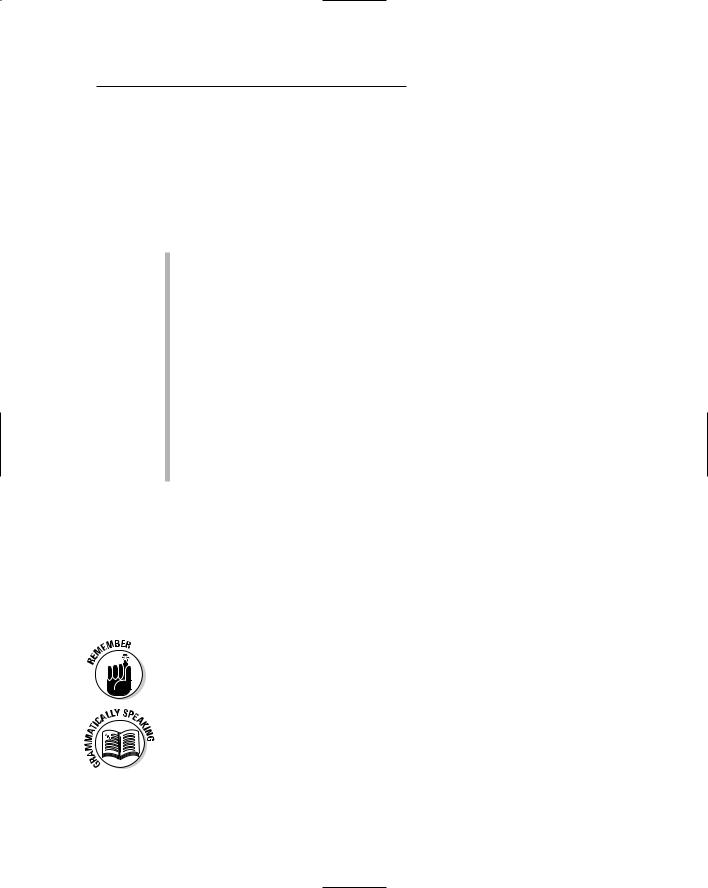
Chapter 6: Shopping Made Easy 133
Say you’re trying on two pairs of shoes. You like the second pair better: it’s more comfortable, lighter, and cheaper, too. This is what you may be thinking to yourself: Eti tufli udobnyeye, lyegchye, i dyeshyevlye chyem tye. (eh-tee toof-lee oo-dohb-nee-ee lyekh-chee ee dee-shehv-lee chyem tye; These shoes are more comfortable, lighter, and cheaper than those.)
In addition to the words we use here, some other commonly used comparative adjectives in Russian are
dlinnyeye (dlee-nye-ee; longer)
dorozhye (dah-roh-zheh; more expensive)
dyeshyevlye (dee-shehv-lee; cheaper)
intyeryesnyeye (een-tee-ryes-nee-ee; more interesting)
kholodnyeye (khuh-lahd-nye-ee; colder)
korochye (kah-rohch-chee; shorter)
krasivyeye (kruh-see-vee-ee; more beautiful)
tolsh’ye (tohl-sh’e; thicker)
ton’shye (tohn’-sheh; thinner)
tyazhyelyeye (tee-zhih-lye-ee; heavier)
tyeplyeye (teep-lye-ee; warmer)
Talking about what you like most (or least)
When you look at several items (or people or things), you may like one of them most of all. To communicate this preference, you need to use the superlative form of the adjective. Just like in English, Russian simply adds the word samyj (sah-mihy; the most) before the adjective and noun you’re talking about.
To express the superlative form of the adjective, put samyj before the neutral adjective form, not the comparative adjective form, as given in the previous section. For a list of superlative adjective forms, see Table 6-2.
Samyj is an adjective and must agree in case, number, and gender with the nouns and other adjectives it modifies. (For details on adjective-noun agreement, see Chapter 2). Table 6-2 has the forms of samyj you need to use.
